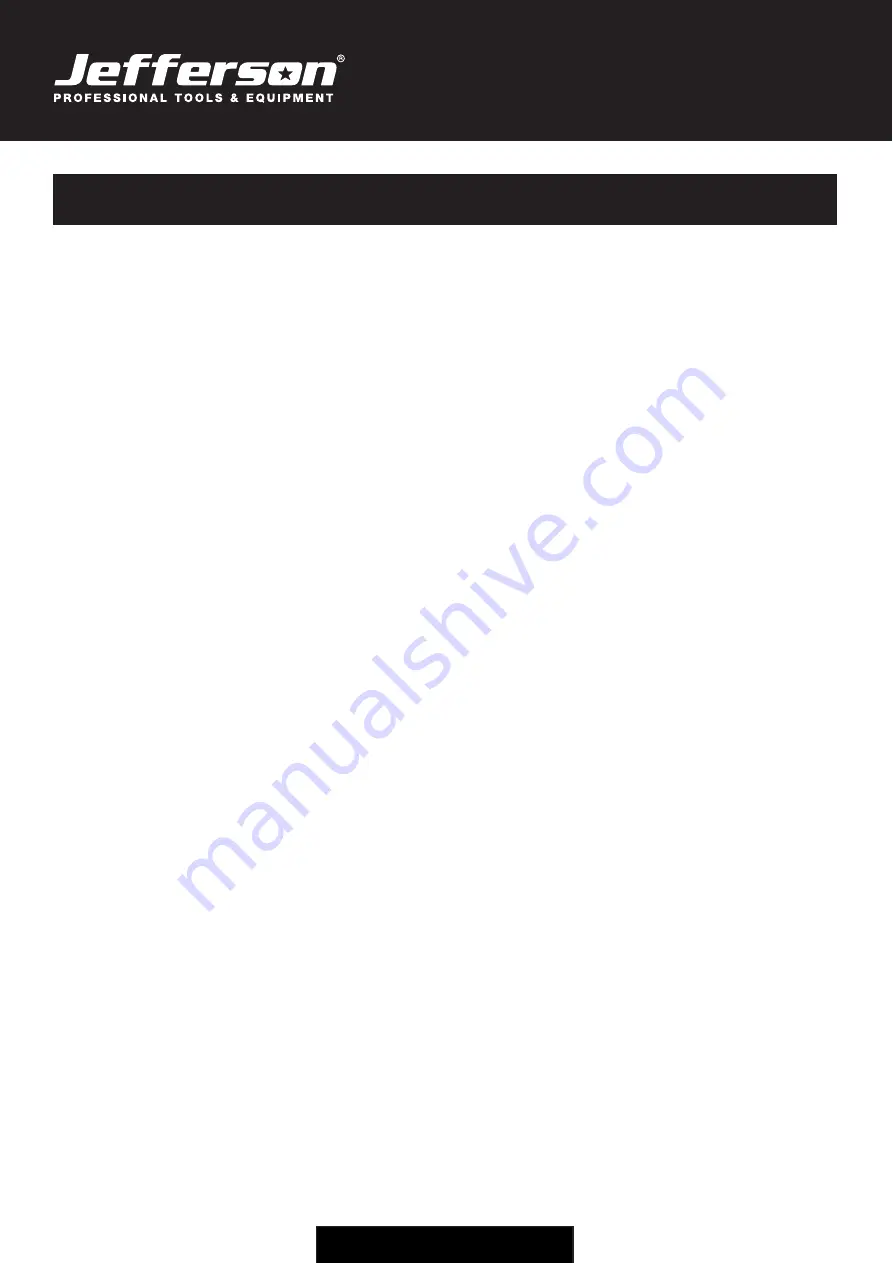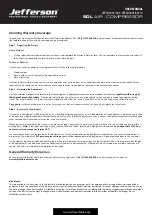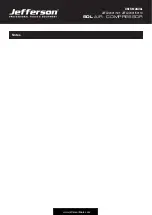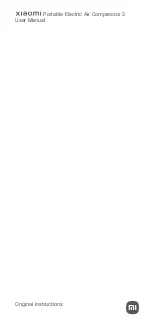
6
USER MANUAL
JEFLD2001/50
•
JEFLD2001/50110
50L
AIR COMPRESSOR
www.jeffersontools.com
5. GENERAL SAFETY GUIDELINES
Read and ensure that you understand all of the operating instructions, safety precautions and warnings in this Instruction Manual before operating
or maintaining this compressor.
Most accidents that result from compressor operation and maintenance are caused by the failure to observe basic safety rules or precautions.
An accident can often be avoided by recognizing a potentially hazardous situation before it occurs, and by observing appropriate safety
procedures.
Basic safety precautions are outlined in the “SAFETY” section of this Instruction Manual had in the sections which contain the operation and
maintenance instructions.
Hazards that must be avoided to prevent bodily injury or machine damage are identified by WARNINGS on the compressor and in this Instruction
Manual.
Never use this compressor in a manner that has not been specifically recommended by manufacturer, unless you first confirm that the planned use
will be safe for you and others.
SIGNAL WORDS:
WARNING:
indicates a potentially hazardous situations which, if ignored, could result in serious personal injury.
CAUTION:
indicates a hazardous situations which, if ignored, could result moderate personal injury, or could cause machine damage.
NOTE:
emphasizes essential information
READ ALL SAFETY INSTRUCTIONS
1. Never touch moving parts
Never place your hands, fingers or other body parts near the compressor’s moving parts.
2. Never operate without all safety guards in place
Never operate this compressor without all guards or safety features in place and in proper working order. If maintenance or servicing requires the
removal of a guard or safety features, be sure to replace the guards or safety features before resuming operation of the compressor.
3. Always wear eye protection
Always wear safety goggles or equivalent eye protection. Compressed air must never be aimed at anyone or any part of the body.
4. Protect yourself against electric shock
Prevent body contact with grounded surfaces such as pipes, radiators, ranges and refrigeration enclosures. Never operate the compressor in
damp or wet locations.
5. Disconnect the compressor
Always disconnect the compressor from the power source and remove the compressed air from the air tank before servicing, inspecting,
maintaining, cleaning, replacing or checking any parts.
6. Avoid unintentional starting
Do not carry the compressor while it is connected to its power source or when the air tank is filled with compressed air. Be sure the knob of the
pressure switch in the
“Off”
position before connecting the compressor to its power source.
7. Store compressor properly
When not in use, the compressor should be stored in dry place. Keep out of reach of children.
8. Keep work area clean
Cluttered work areas can lead to injuries. Clear all work areas of unnecessary tools, debris, furniture etc…
9. Wear suitable clothing during operation
Do not wear loose clothing or jewellery. They can be caught in moving parts. Wear protective hair covering to contain long hair.
10. Don’t abuse the cord
Never yank it to disconnect from receptacle. Keep cord from heat, oil and sharp edges.
11. Keep children and animals away from the work area.
12. Maintain compressor with care
Follow instructions for lubricating. Inspect cords periodically and if damaged, have repaired by authorized service facility. Inspect extension cords
periodically and replace if damaged.
13. Outdoor use extension cords
When compressor in used outdoors, use only extension cords in-tended for use outdoors and so marked.
14. Stay alert
Watch what you are doing. Use common sense. Do not operate compressor when you are tired.
Compressor should never be used by you if you are under the influence of alcohol, drugs or medication that makes you drowsy.
15. Check damaged parts and air leak
Before further use of the compressor, a guard or other part is dam-aged should be carefully checked to determine that it will operate properly and
perform its intended function. Check for alignment of moving parts, binding of moving parts, breakage of parts, mounting, air leak, and any other
conditions that may affect its operation. A guard or other part that is damaged should be properly repaired or replaced by an authorized service
centre unless otherwise indicated elsewhere in this instruction manual. Have defective pressure switches replaced by authorized service centre.
Do not use compressor if switch does not turn it on and off.






































